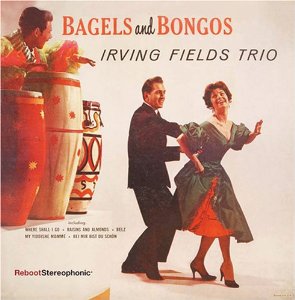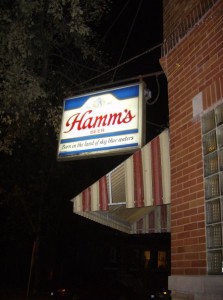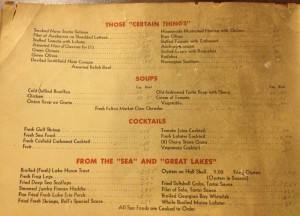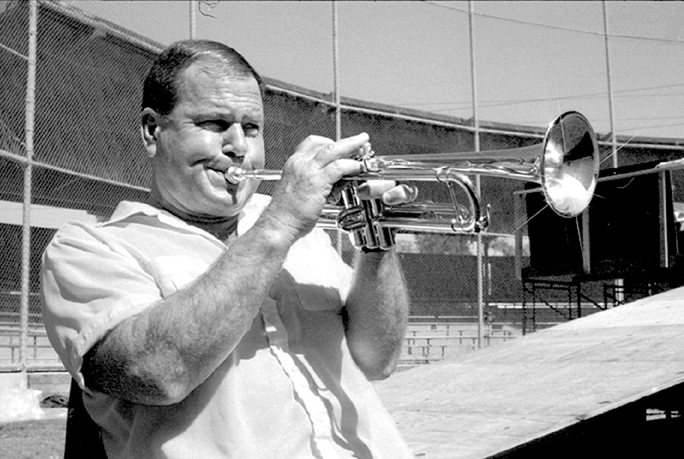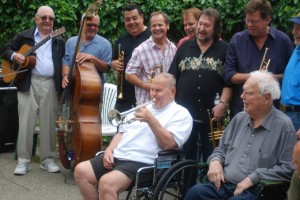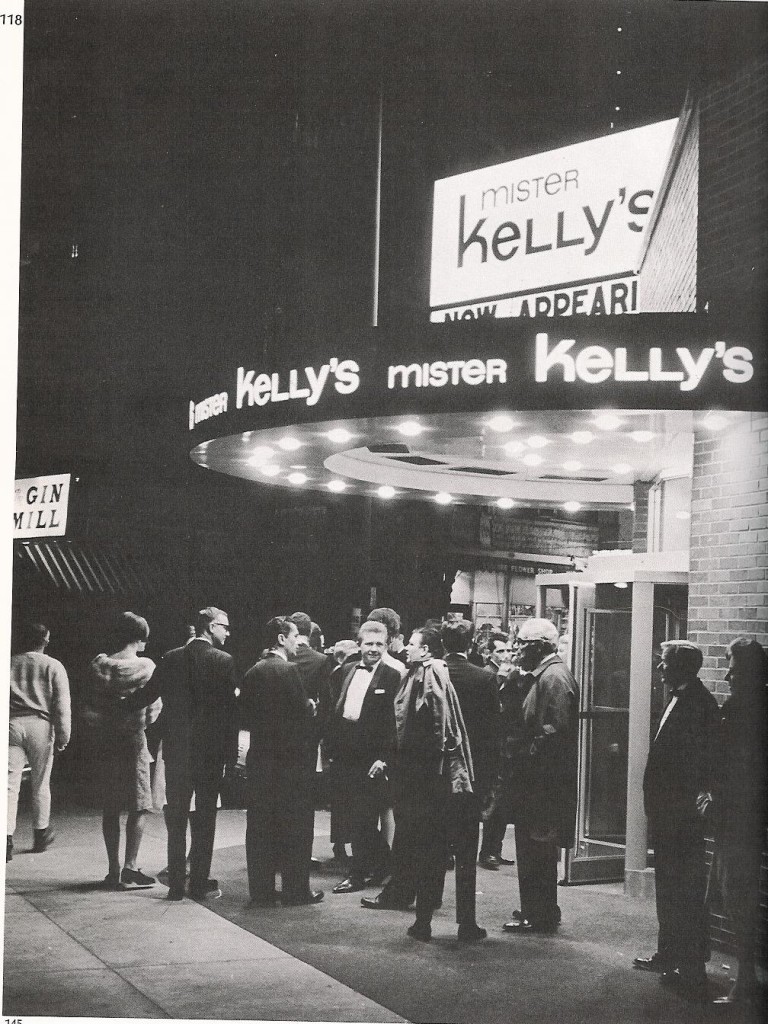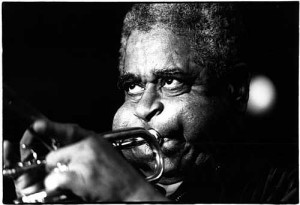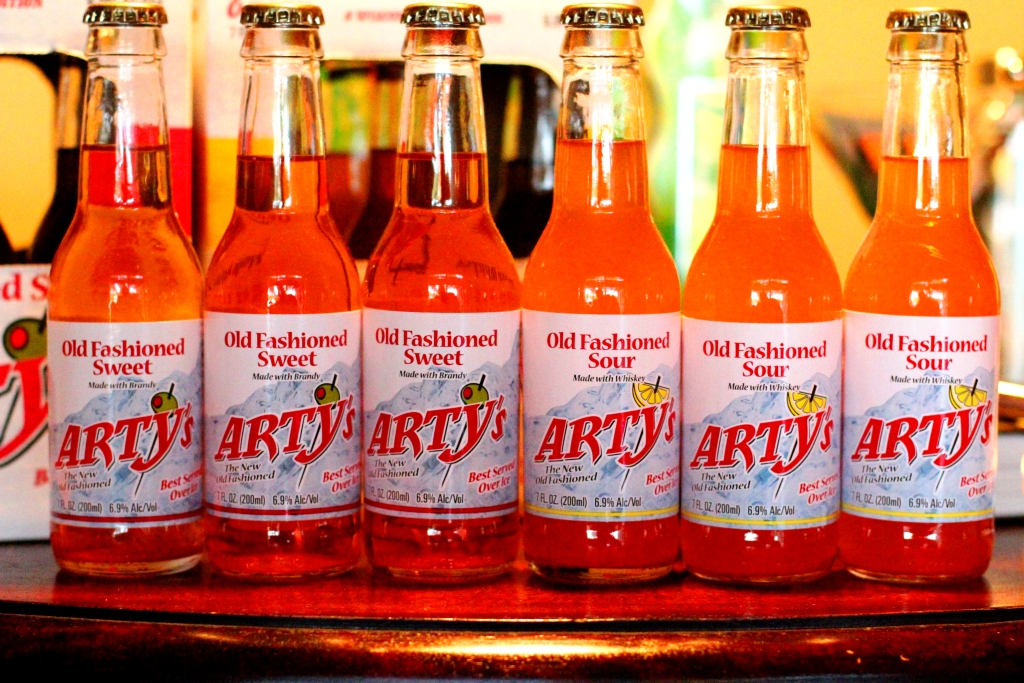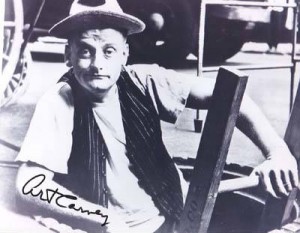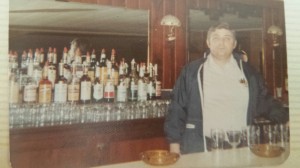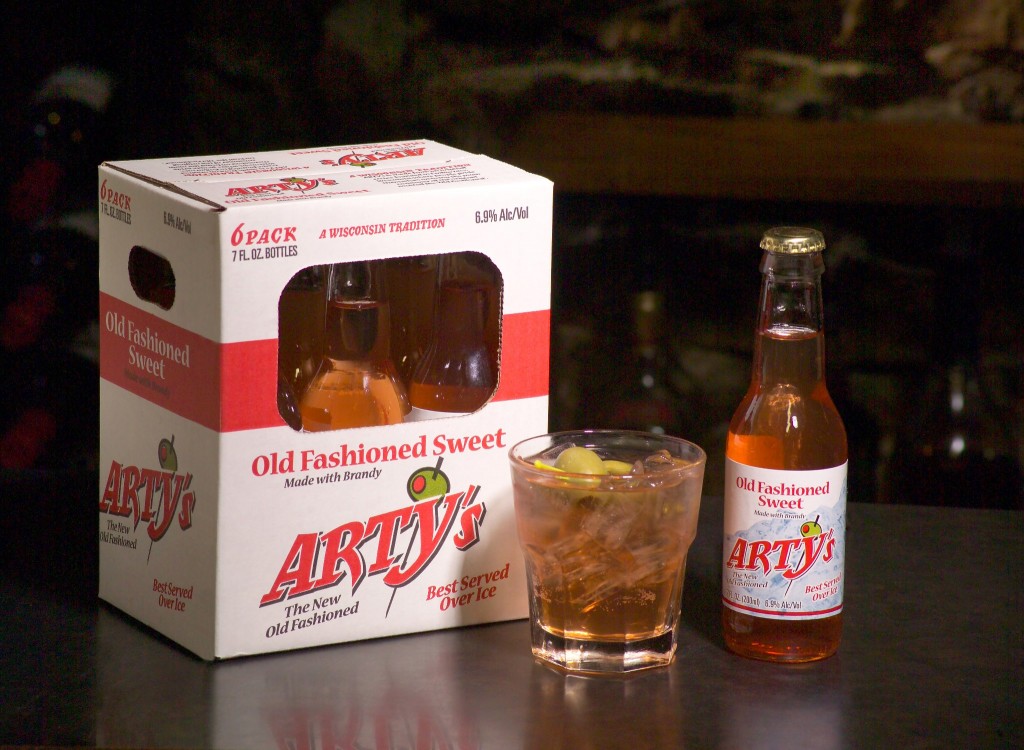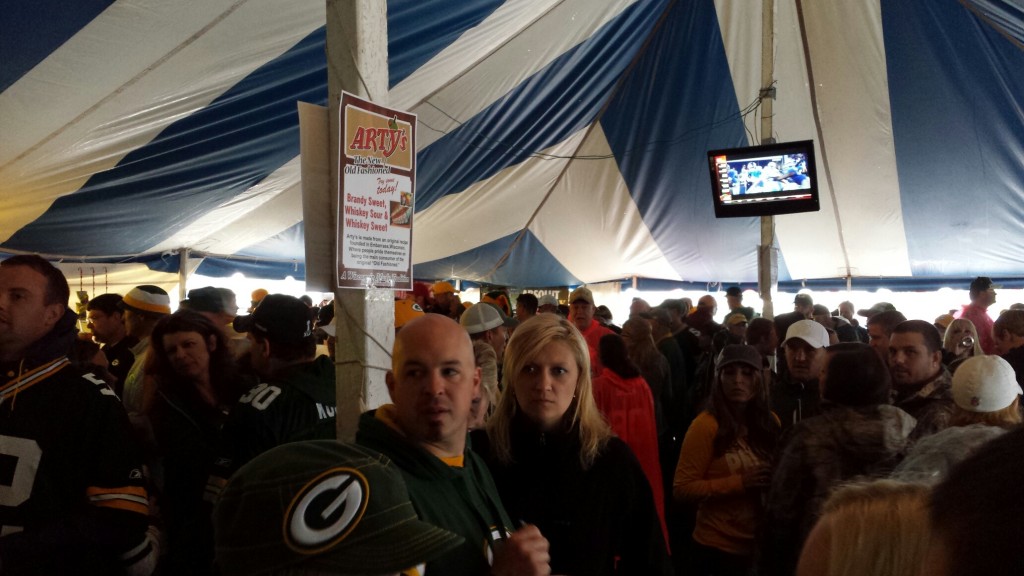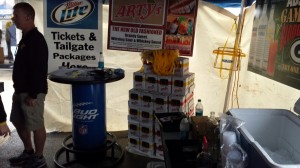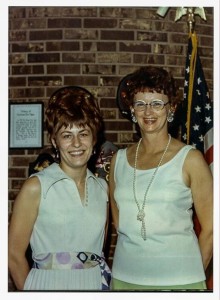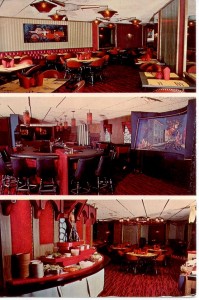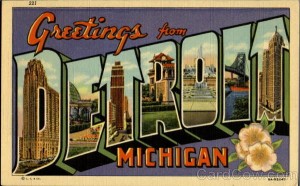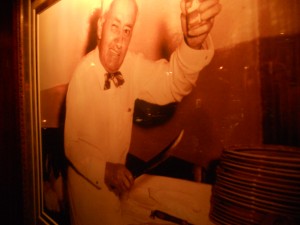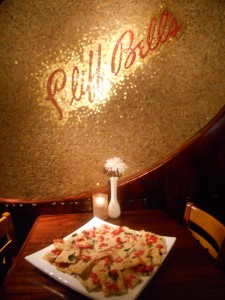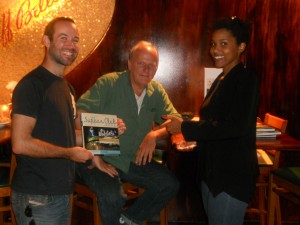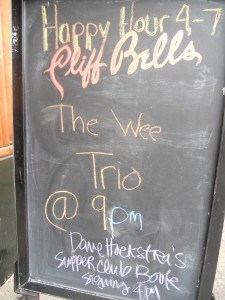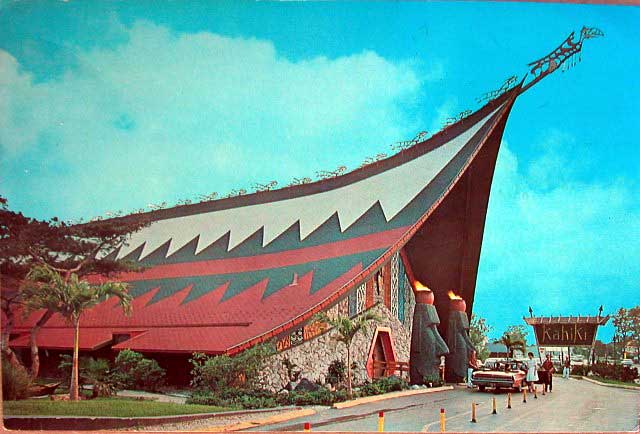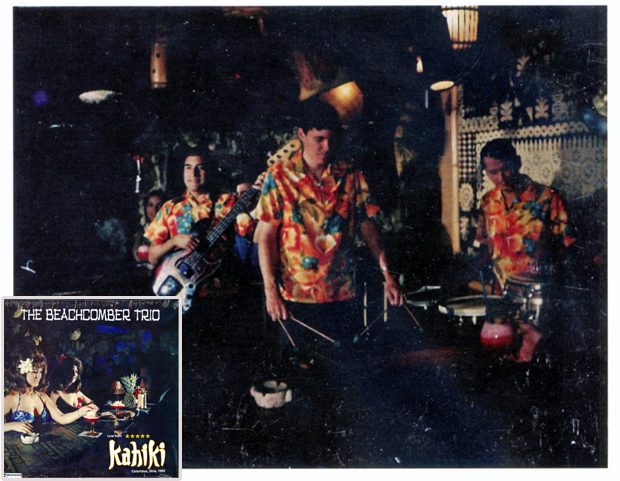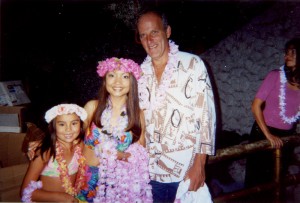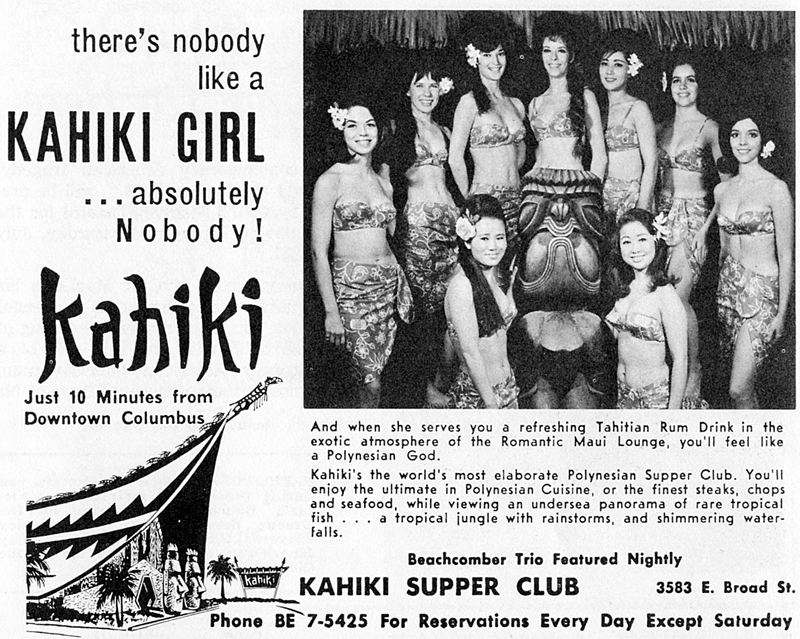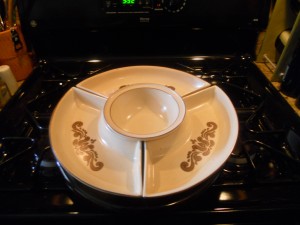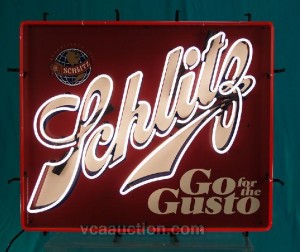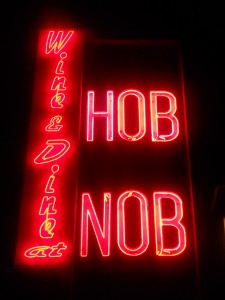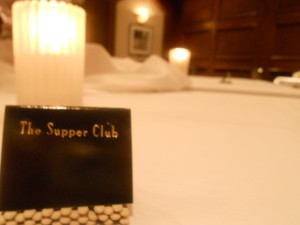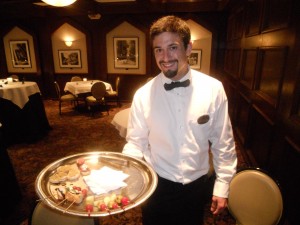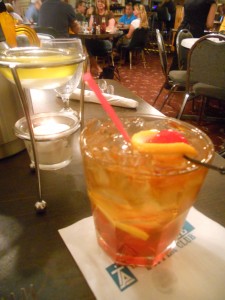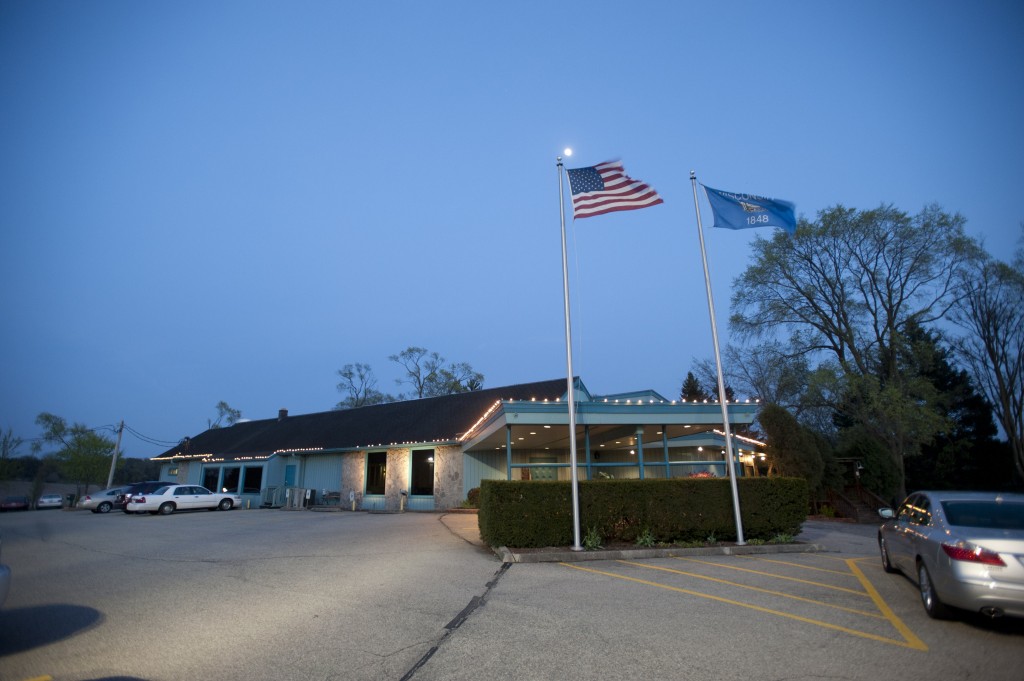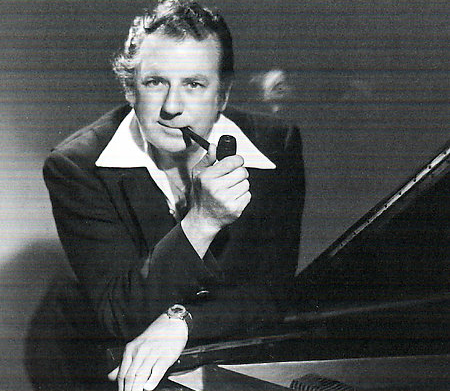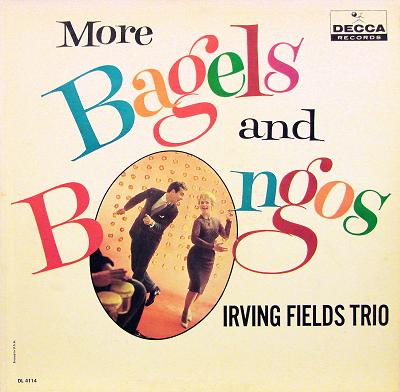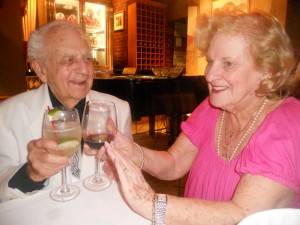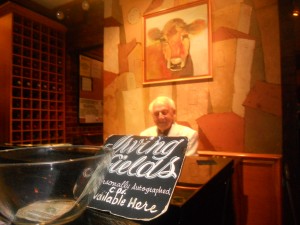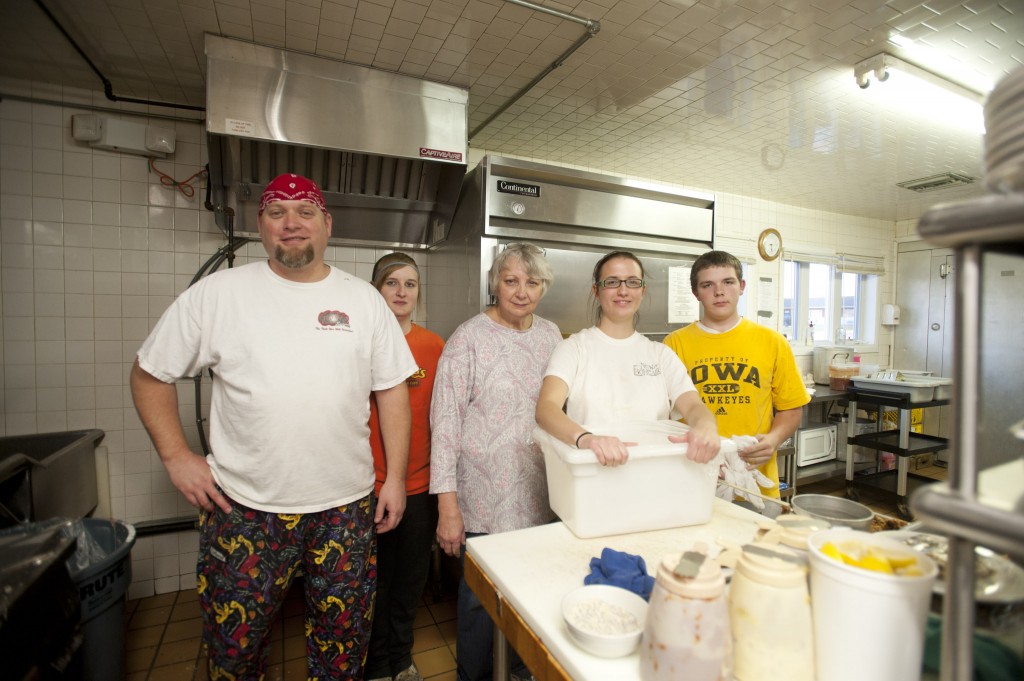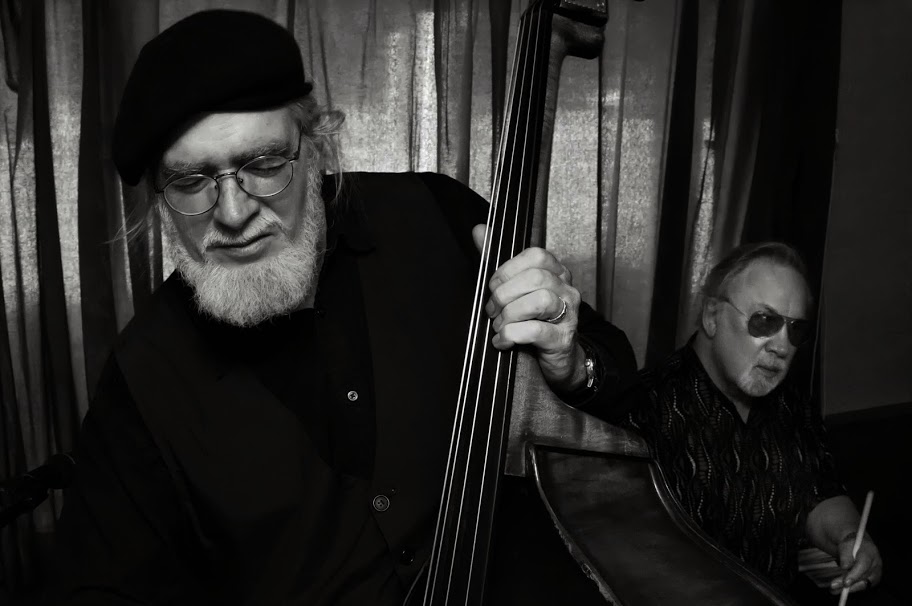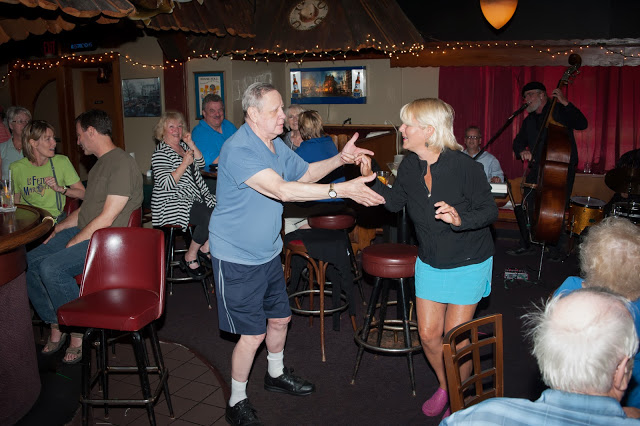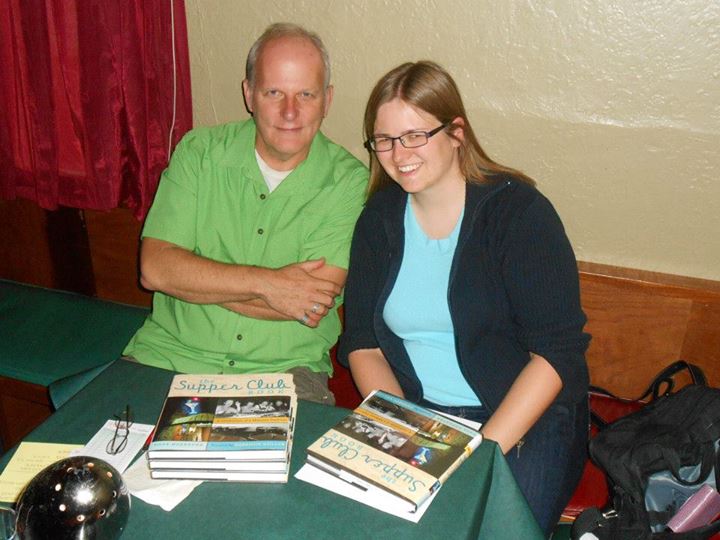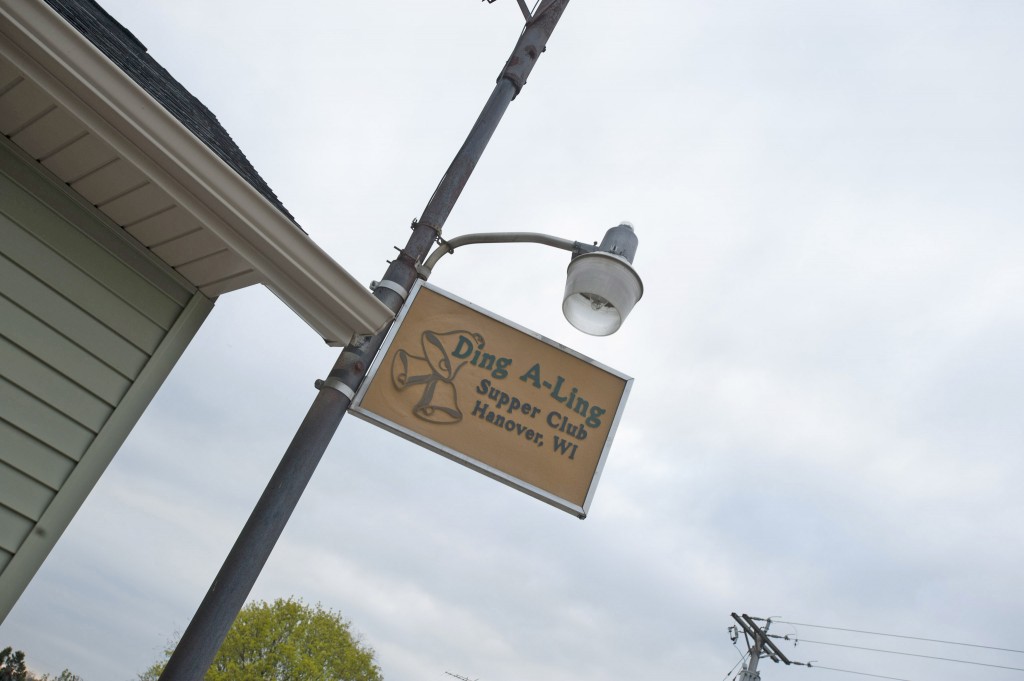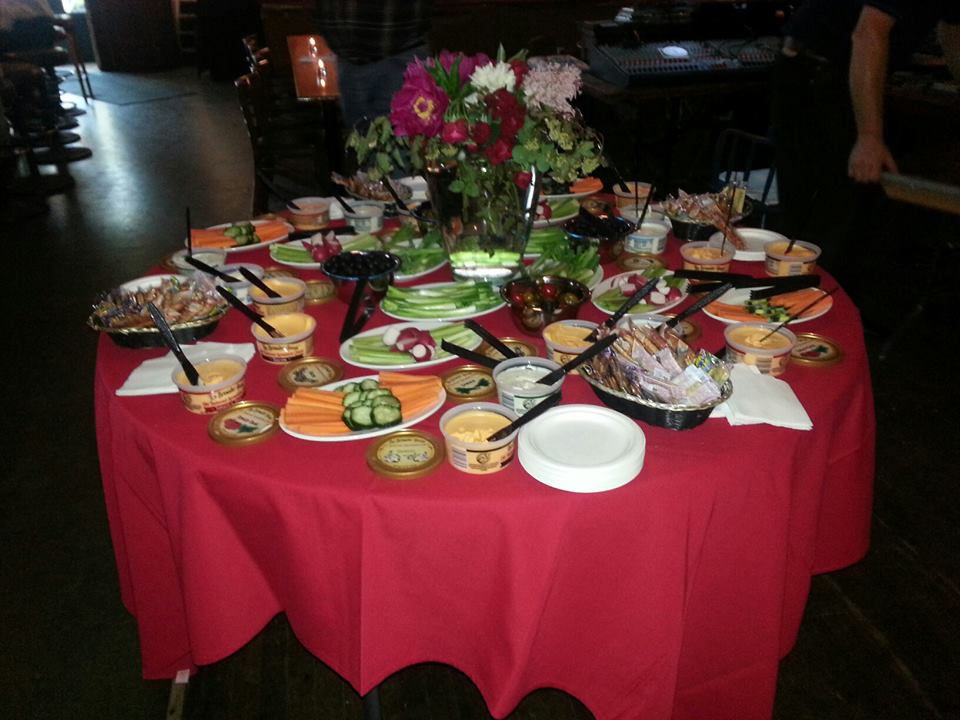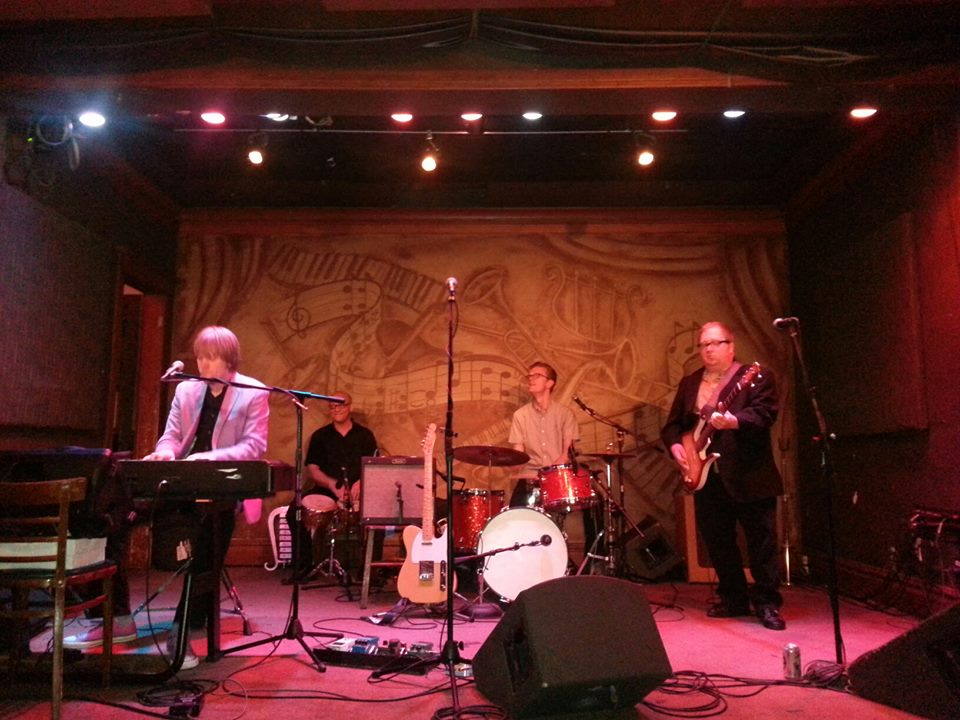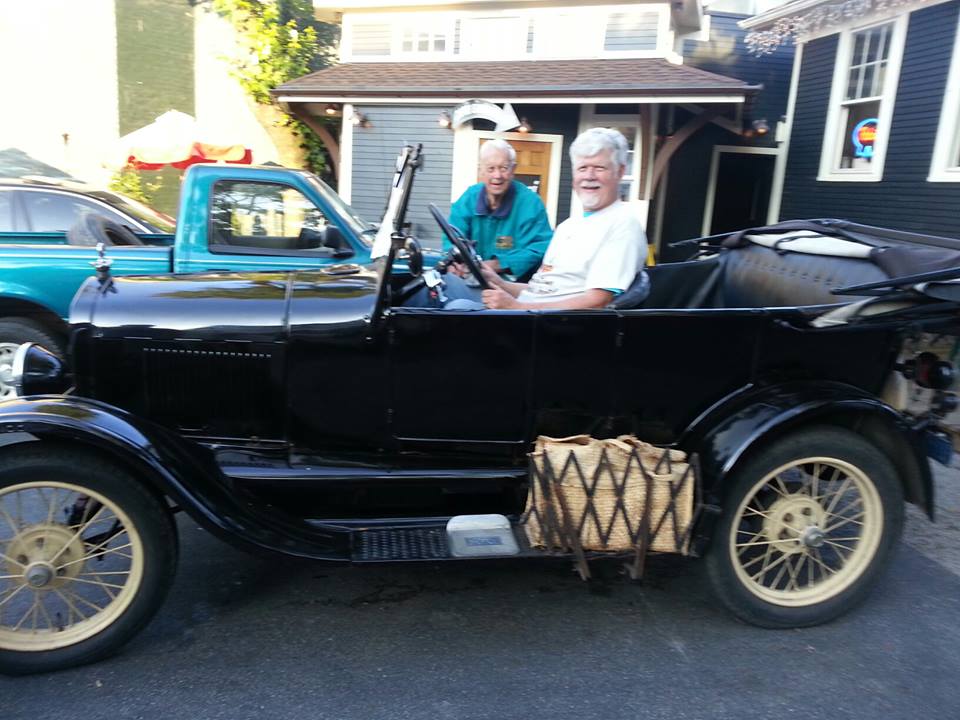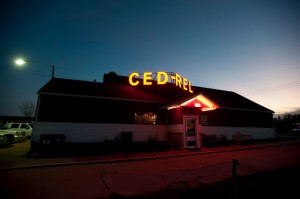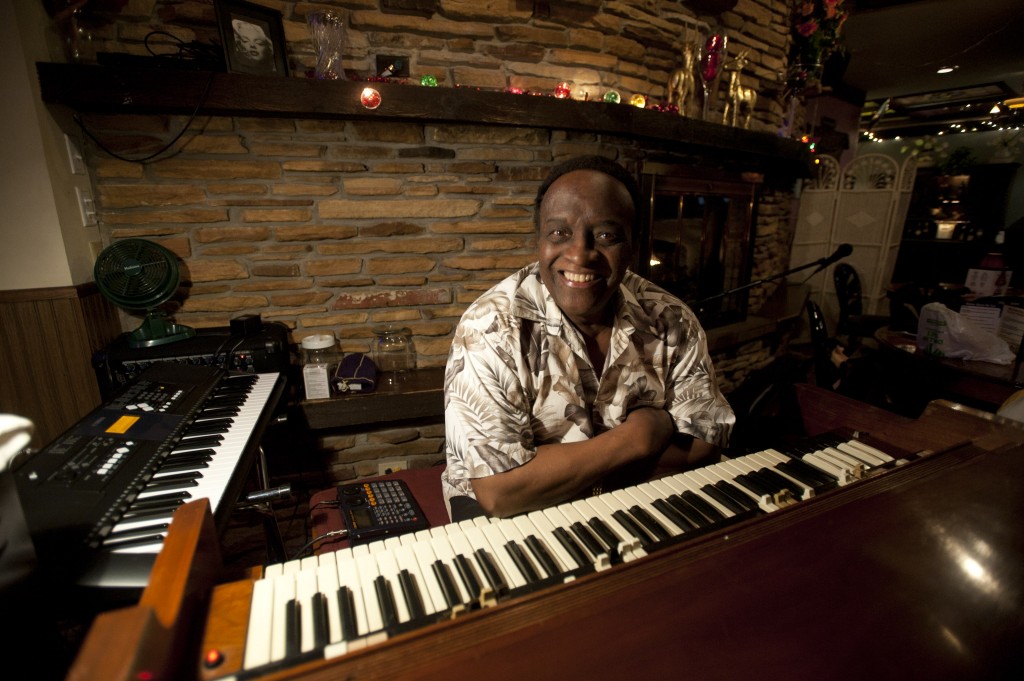
The great Billy Anderson (Photo by Paul Natkin)
WISCONSIN DELLS, Wis.—Someone calls out a request for “What a Wonderful World” from a dark corner of the lounge at the House of Embers.
It is early on a cold December night in Central Wisconsin but that doesn’t prevent house entertainer Billy Anderson from wearing a short sleeved brown print Hawaiian shirt.
He smiles brightly and launches into the Louis Armstrong classic, his brown hands gliding across his vintage Hammond B-3 organ like skis on snow.
The request has come from one of seven middle-aged women from the Wisconsin Dells who are celebrating a birthday in full cruise ship mode. One woman works for a local real estate company. It is said another woman’s husband runs a circus. After Billy Anderson is done singing “What a Wonderful World” the women approach him.
“Let’s go sit on Billy’s organ!,” one declares.
Billy Anderson still smiles brightly.
“I’ve heard that a few times,” he says.
The women know Billy Anderson because he has been appearing at Wisconsin Dells supper clubs since 1966.
“Right now I play five different places,” Billy says over a soft drink at the bar. “Here. Trappers Turn for Sunday brunch, which is a golf course here. Over at Glacier Rock in Baraboo. I work at Spring Brooke. And Ishnala in the summer. I started there in 1966. I left for a while and I’m back. It’s the same thing as here. Happy hour crowd, they go home at 8:30 or 9. That’s my age group. That’s the type of songs I play.”
Billy Anderson is to the Dells what Jimmy Buffett is to Florida.
He has appeared on Friday and Saturday nights at (Wally’s) House of Embers since 1998. “In this supper club where I get an older crowd, I start around 4:30, 5’o clock,” he says. “It’s standards; Frank Sinatra, Dean Martin.
“It’s not a rap place.”
Ellen Weiss of Baraboo seems to be the ring leader of the playful posse. She sits down on a piano bench next to Billy Anderson and the other women quickly assemble behind the organ player. The scene resembles a saucy 1970s photo shoot for an Isaac Hayes album cover.
Weiss later reflects, “One thing about Billy is there could be a whole group of young people in here and he would play exactly what they want. He is the most amazing musician I have seen.”
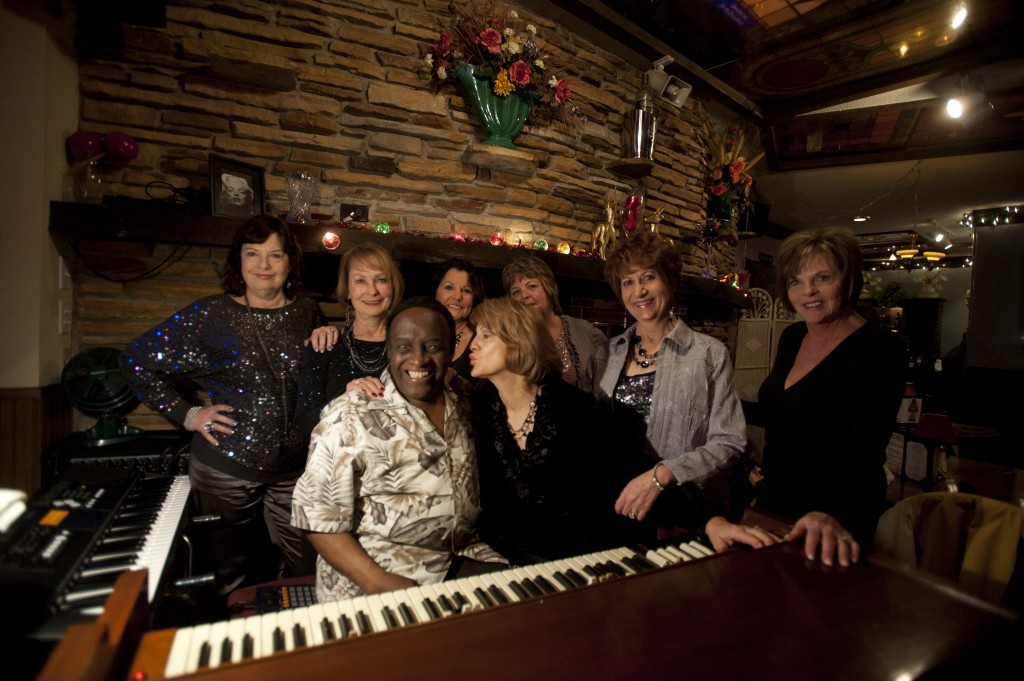
Billy Anderson fan Ellen Weiss (right). Photo by Payl Natkin
House of Embers is a special place for Weiss.
“In 2006 my husband asked me to marry him at this restaurant,” says Weiss, who works at the Great Wolf Lodge Resort in the Dells. “It was right around the corner from where we are sitting. Someone was playing the harp. A waitress wrapped the ring in a tissue and he handed it to me. I opened it up and said ‘Yes.’ My husband and I come here every year for our anniversary.”
Here is where you begin to understand the sound of the supper club.
Supper club musicians perform in an arena of meaningful tradition. They are not lounge singers, heavy on the shtick. And supper clubs are not piano bars where people drink all night long and sing along to “New York, New York.” This is Wisconsin.
“People are eating,” Billy says. “I do quiet dinner stuff. I take requests. My favorite songs are ‘Witchcraft’ by Frank Sinatra and Louis Armstrong’s ‘Wonderful World.’ They are my favorite entertainers. Frank had a unique way of singing his songs, you felt it just by listening. Louis made you feel like anyone could sing even if they had an average voice.”
A supper club musician is like a good marriage: It is all about balance.
“It’s more expensive to have live entertainment in a supper club these days but Billy is worth it,” says House of Embers owner Mike Obois in a separate interview. “He’s great with families and kids, which are future customers. The old people know him and know the songs. And he’s personable. He’ll take his break and visit you at a table. No matter how busy the bar is, if he wants to visit, he’ll visit with you. And he’s got a memory. He’ll remember somebody from seven years ago on their birthday and he will know their favorite song.”
The House of Embers has a storied tradition of supper club music.
When the restaurant opened in 1959, Louise “Lou” Stettin began playing every Sunday night on a baby grand piano in the club’s fireplace enhanced Tiffany Roon. She played until the age of 95. She never read music, but could stretch from ragtime to standards.
No rap, either.
Born in Chicago on St. Patrick’s Day, Stettin died in June, 2005 at the age of 98. Her favorite song to play was “When Irish Eyes are Smiling.”
Stettin was the mother of the late Barbara Obois, who was Wally’s wife. Stettin’s tradition was to have one whiskey Old Fashioned and a cup of soup before her gig, something Keith Richards might also have done during his recent residency at the United Center in Chicago.
In September, 2000 Stettin served as Grand Marshall of the famous Wa-Zha-Wa Days parade in the Dells. She wore multicolored Carmen Miranda headgear and a sparkling rhinestone dress. Stettin waved to everyone along the parade route. She struck a familiar chord. “My arm hurt,” she told the Wisconsin State Journal in a November, 2000 profile. “And I had to play that night.”
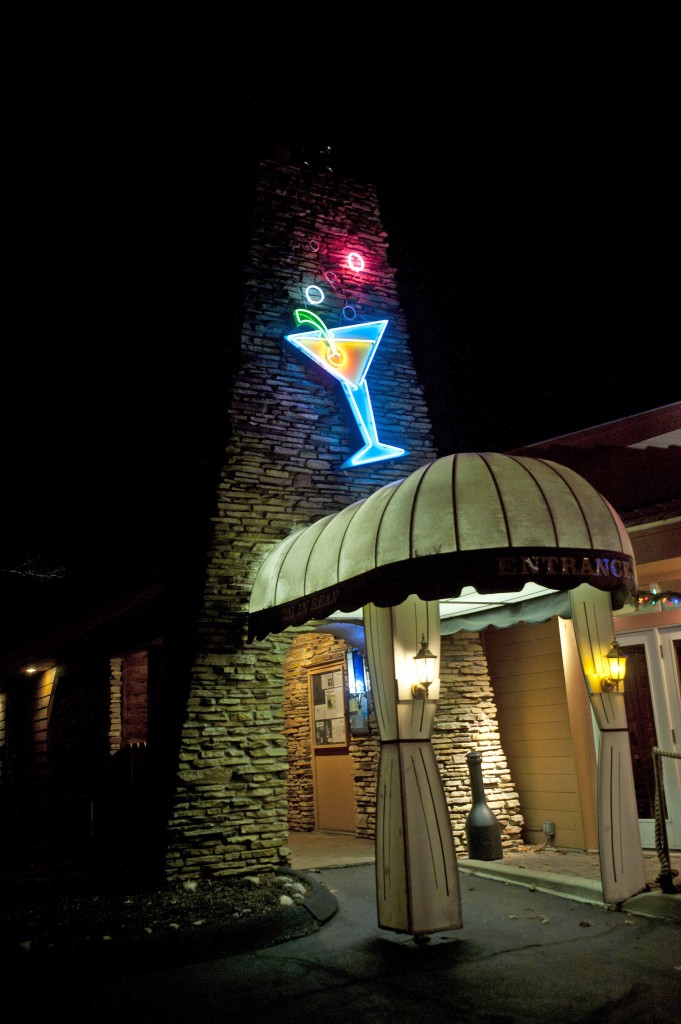
Cheers! at House of Embers (Photo by Paul Natkin)
Billy Anderson was born in 1939 in Waterloo, Iowa.
His mother Gladys owned a diner called Gladys’s Restaurant. His father William worked at a government factory. They are deceased and Billy is not married. He lives in Nellsville, Wis., about 100 miles from the Dells. During his weekend gigs he stays in the Dells.
Billy has always been a solo act.
He was on the road for two weeks when a Milwaukee booking agency found him work at the old Uphoff hotel and restaurant (now part of the new Mount Olympus complex at nearby Lake Delton.) Billy then moved to the Ishnala in the summer of 1966. “There was this place,” Billy says in describing the 1966 Dells scene. “Fisher’s (now Sorrento’s). The Del-Bar.”
He never left.
Another thing about supper clubs is their extraordinary sense of place.
Ask Billy Anderson about the bright lights of Chicago or Minneapolis and he shakes his head no. “Chicago, no, no,” he says, and in fact there are more supper club gigs in the Dells than jobs at non-hotel piano bars in Chicago. “There’s so much work here,” he says. “The Dells used to close up early, especially in the winter. With the casino and water parks they’re open year round. After the summer it over its a pretty regular crowd that comes in.”
Billy figures he knows “thousands” of songs. He can play pop standards, boogie-woogie and blues. He played country and western the night Charley Pride came in after Pride headlined at the Crystal Grand Music Theatre down the road from the supper club.
Billy Anderson is a self-contained operation.
He owns three Hammond B-3s and usually keeps them at the clubs he is appearing at. The B-3 at the House of Embers is made of dark furniture wood. Billy bought it in 1979 in Waterloo, Ia. “It’s not that heavy,” he says. “Take the pedals off, flip it and roll it away. I do have a trailer I haul it around in. I take it to Ishnala in the summer.” He also sells CDs from the top of the B-3. Billy Anderson’s latest CD is “Greatness Remembered,” consisting of 11 standards by dead artists. “What a Wonderful World” is on the CD as is Bobby Darin’s “Mack the Knife” and Lou Rawls’ “Lady Love.” But Anderson’s high range floats more like blue eyed soulster Boz Scaggs than the baritone of Rawls.
“Greatness Remembered” was recorded in a small home studio in Wisconsin Rapids. “I order about 200 at a time,” he says. “When they sell out I order 200 more. Its not a million seller. Years ago I did LPs. And cassettes. Now CDs.”
Times change.
But Billy Anderson hasn’t changed so much.
Mike Obois says, “When Mom and Dad sold the restaurant to us in ‘98 we were talking about getting entertainment. This is the honest truth. My Dad goes, ‘See that guy sitting over at the table?’ It was table 35 in the other dining room. My Dad says, ‘That’s Billy Anderson. He used to play at Ishnala all those years and I don’t know what he is doing, but he is a great musician.” Mike was introduced to Billy. And he has been at the House of Embers ever since.
The dimly lit Wisconsin supper clubs set the mood for the supper club sound.
Customers would arrive around 4 or 5 p.m., hear some lounge music, have a couple drinks, adjourn for supper and return to the lounge for more music and a nightcap or three. “Some old timers still do that,” Mike says. “Young people are in a hurry. The drinking laws changed after-dinner drinking. But now that there’s good taxi services in town, or the designated driver, people are smarter. And we don’t want them to get that way.”
A Nov. 5, 1966 Chicago Daily News column asked “What Makes a Supper Club Go?”
Entertainment columnist Sam Lesner wondered, “Is it the room or the show that makes a supper club go? Someone asked it earlier this week in the newly remodeled Camellia House (at the Drake Hotel).” Lesner concluded the talent set the stage, a fact Billy Anderson began backing up at roughly the same period.
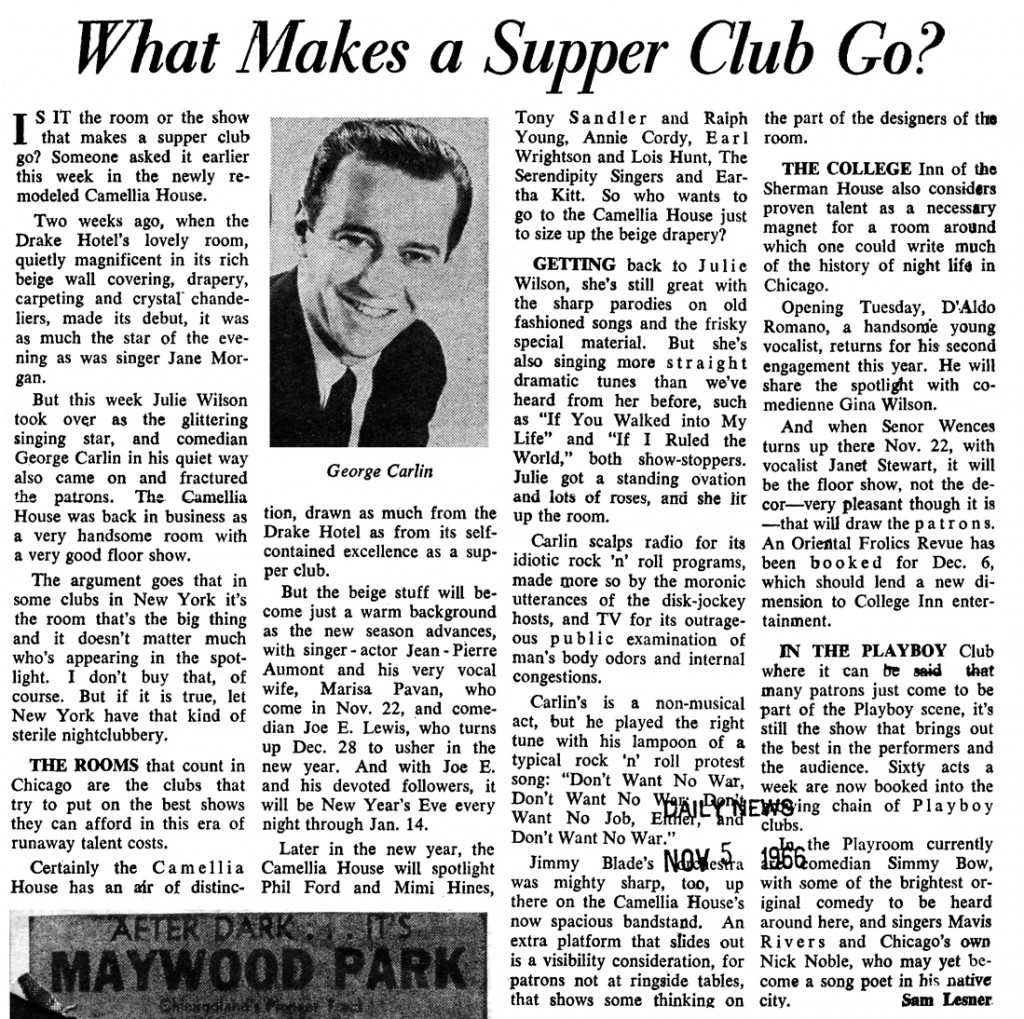
Playboy magazine founder Hugh Hefner told me supper clubs were the template for his Playboy Club chain. And remember, he opened a Playboy Club resort in supper clubby Lake Geneva, Wis.
“A supper club is exactly what the Playboy club was,” Hefner said during a 2010 interview from his Playboy mansion in Los Angeles. “When you come into the lobby you were greeted by the bunny (a “host” in supper club parlance) who checked your key. It was double level. You looked down the steps into the bar or up half a floor into the living room. There was a piano bar in the living room and a buffet at the end of the room.
“It was a very supper clubby feeling.”

Lesner also drew a parallel between supper clubs and the Playboy Club in his article: “In the Playboy Club where it can be said that many patrons just come to be part of the Playboy scene (not unlike the birthday women at the House of Embers), it’s still the show that brings out the best in the performers and the audience.”
